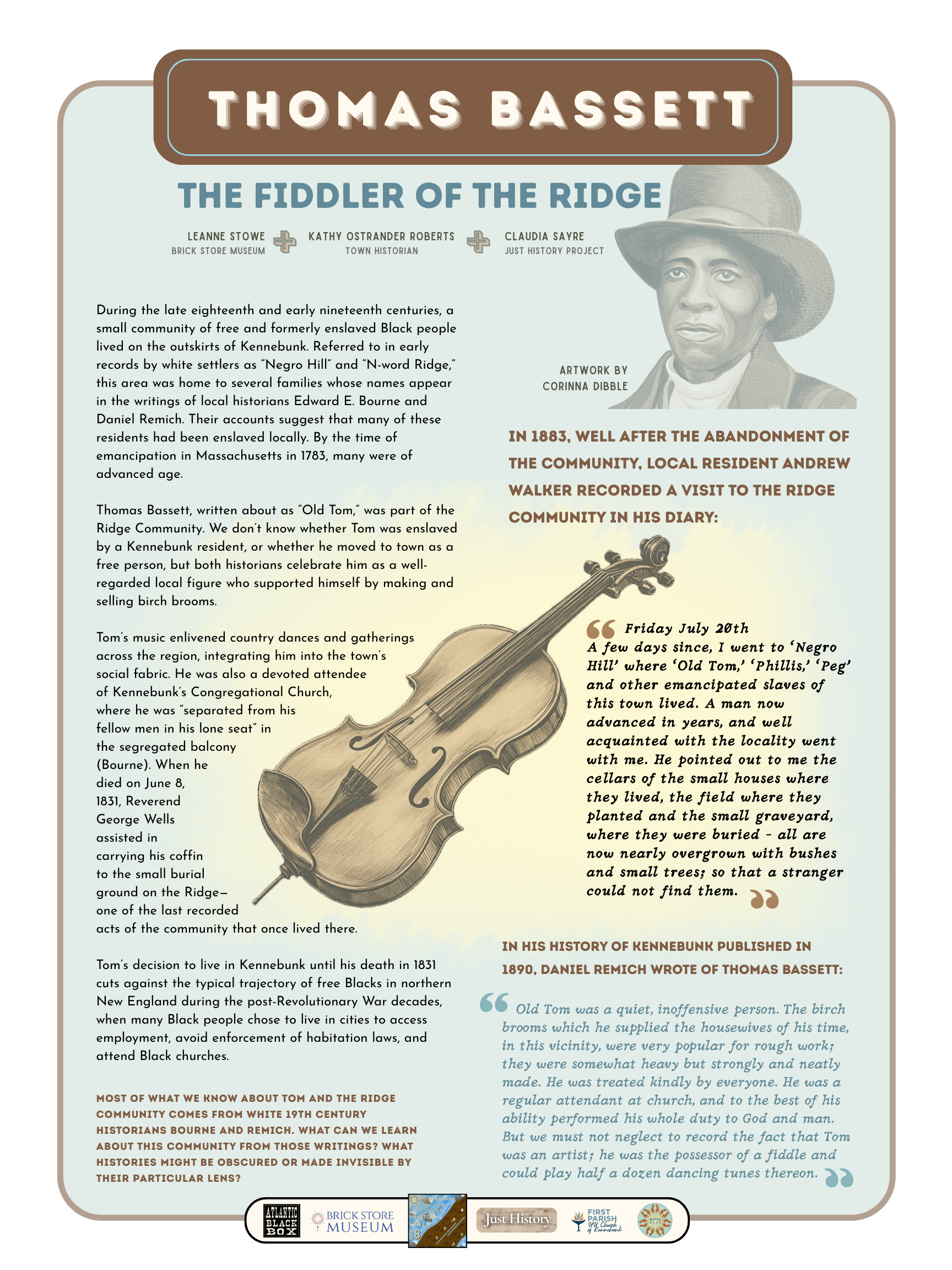Thomas Bassett: The Fiddler of the Ridge
Painting of Tom Bassett by Corinna Dibble
During the late eighteenth and early nineteenth centuries, a small community of free and formerly enslaved Black people lived on the outskirts of Kennebunk. Referred to in early records by white settlers as “Negro Hill” and “N-word Ridge,” this area was home to several families whose names appear in the writings of local historians Edward E. Bourne and Daniel Remich. Their accounts suggest that many of these residents had been enslaved locally. By the time of emancipation in Massachusetts in 1783, many were of advanced age.
Thomas Bassett, written about as “Old Tom,” was part of the Ridge Community. We don’t know whether Tom was enslaved by a Kennebunk resident, or whether he moved to town as a free person, but both historians celebrate him as a well-regarded local figure who supported himself by making and selling birch brooms.
“Old Tom was a quiet, inoffensive person. The birch brooms which he supplied the housewives of his time, in this vicinity, were very popular for rough work; they were somewhat heavy but strongly and neatly made. He was treated kindly by everyone. He was a regular attendant at church, and to the best of his ability performed his whole duty to God and man. But we must not neglect to record the fact that Tom was an artist; he was the possessor of a fiddle and could play half a dozen dancing tunes thereon.”
Tom’s music enlivened country dances and gatherings across the region, integrating him into the town’s social fabric. He was also a devoted attendee of Kennebunk’s Congregational Church, where he was “separated from his fellow men in his lone seat” in the segregated balcony (Bourne). When he died on June 8, 1831, Reverend George Wells assisted in carrying his coffin to the small burial ground on the Ridge—one of the last recorded acts of the community that once lived there.
Tom’s decision to live in Kennebunk until his death in 1831 cuts against the typical trajectory of free Blacks in northern New England during the post-Revolutionary War decades, when many Black people chose to live in cities to access employment, avoid enforcement of habitation laws, and attend Black churches.
Well after the abandonment of the community, local resident, Andrew Walker, recorded a visit to the Ridge Community site in his diary (1883). Walker wrote:
A few days since, I went to “Negro Hill” where “Old Tom,” “Phillis,” “Peg” and other emancipated slaves of this town lived. A man now advanced in years, and well acquainted with the locality went with me. He pointed out to me the cellars of the small houses where they lived, the field where they planted and the small graveyard, where they were buried – all are now nearly overgrown with bushes and small trees; so that a stranger could not find them.
Reflection Questions
Most of what we know about Tom and the Ridge Community comes from white 19th century historians Edward Bourne and Daniel Remich.
What can we learn about this community from those writings?
What histories might be obscured or made invisible by their particular lens?
This research was compiled as part of the Just History Walk: Lives Between Two Rivers which took place on November 8, 2025. For more information about this walk, click here. For more research related to this area, click on the tags below. To download a hi-res version of the poster below for educational use, please contact where@atlanticblackbox.com.
Poster design by Meadow Dibble

